Yesterday morning I found more Wilson’s Snipes next to one of the canals at Bear River MBR. Typical of snipes, they almost never allowed me clear shots of them but they gave me enough to make me glad I got the photos.
I’d estimate that there were about a half dozen of them but it was hard to tell because one or two birds would often fly off with others flying in to take their place. They were usually so hidden it was difficult to keep an accurate count of them.
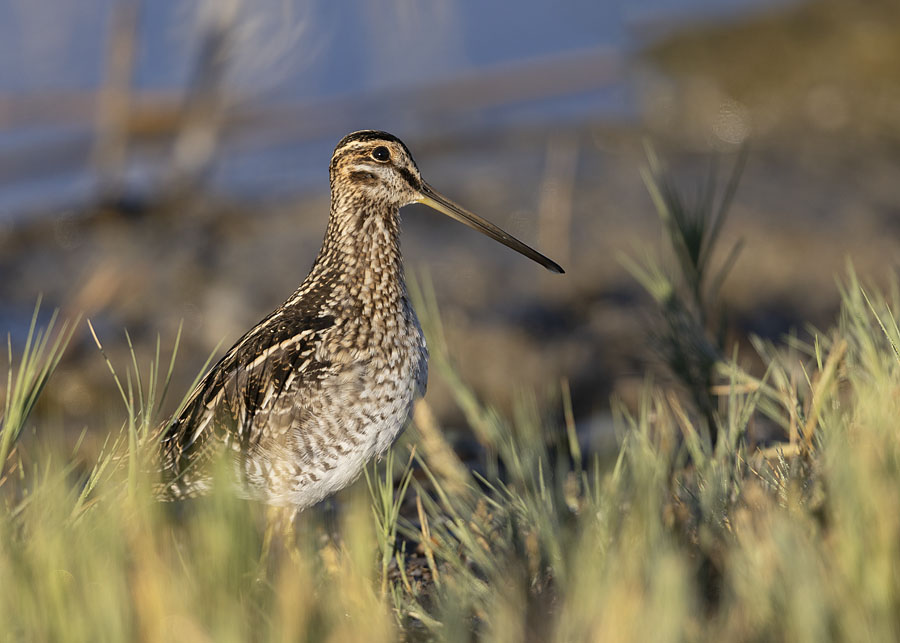
Typically they were at least partially hidden by grass. Sometimes completely hidden.
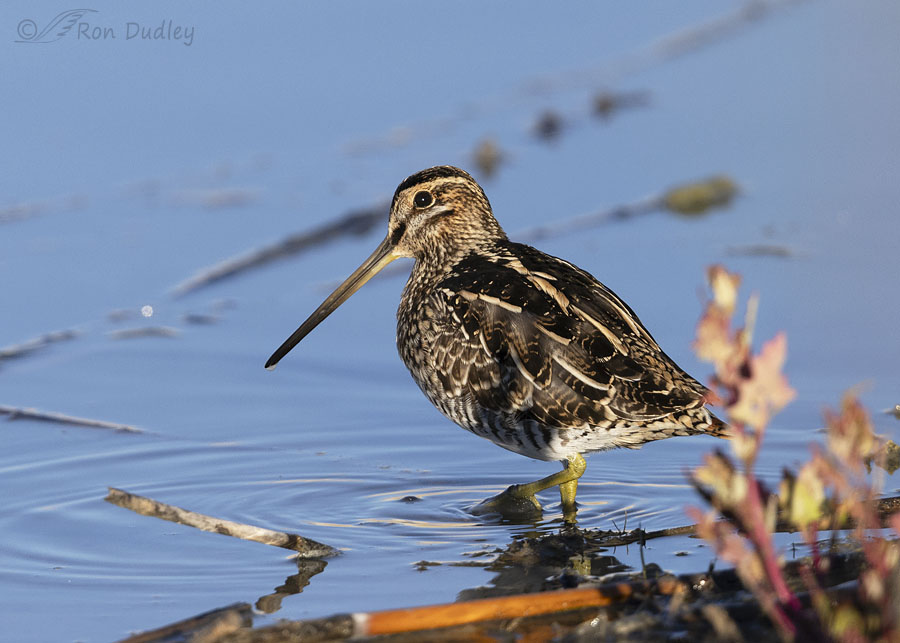
While I was there, this is as far out into the water as any of them ever went.
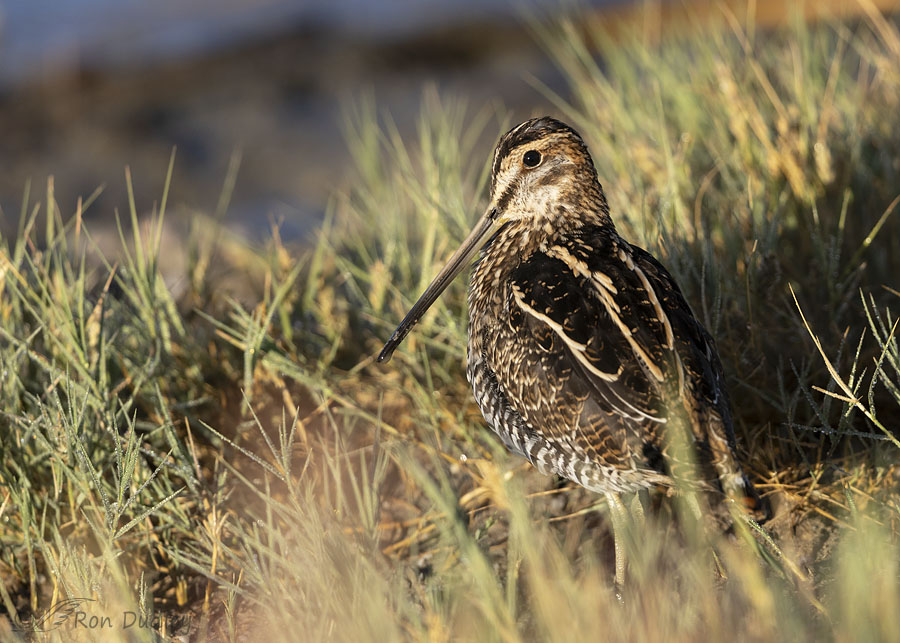
This snipe came in close, which allowed me to see something I’d never noticed in the species before. It’s minor, but stuff like this catches my eye.
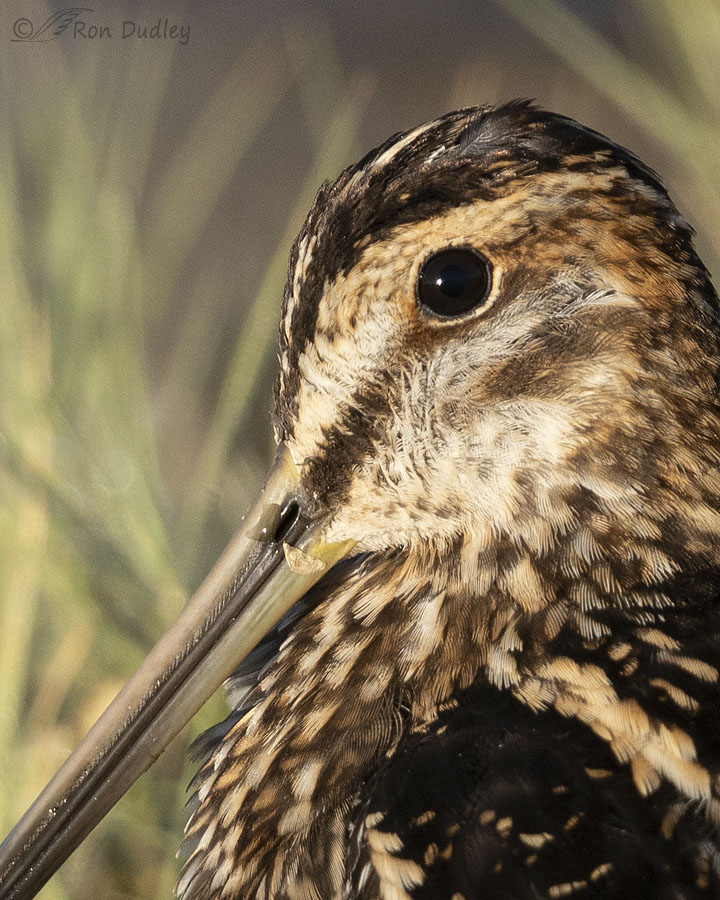
They have a series of tiny, slanted and parallel grooves on their upper mandible. Each one is so small it’s barely the size of a gnat’s whisker. They must have some function or reason for being there but when I tried to research it I came up empty.
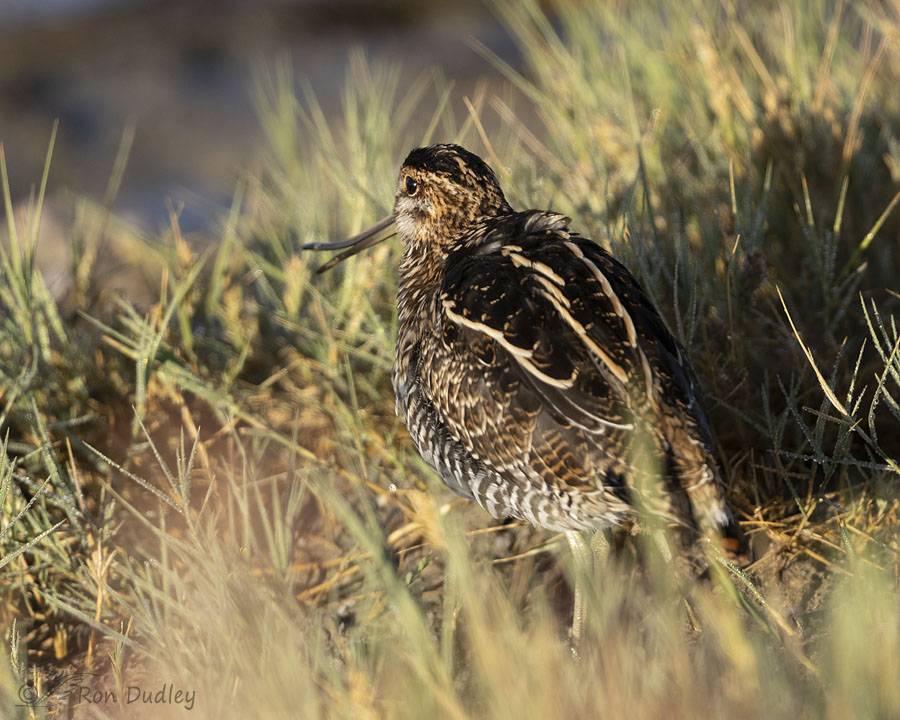
When the same bird turned away from me it demonstrated distal rhynchokinesis at the tip of its bill.
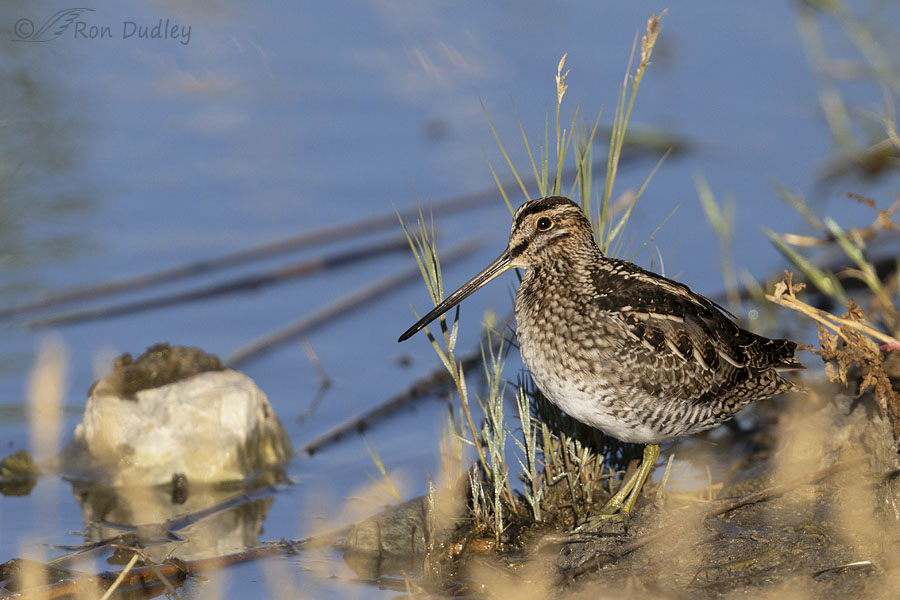
This is about as close as I came to getting an unobstructed view of any of them.
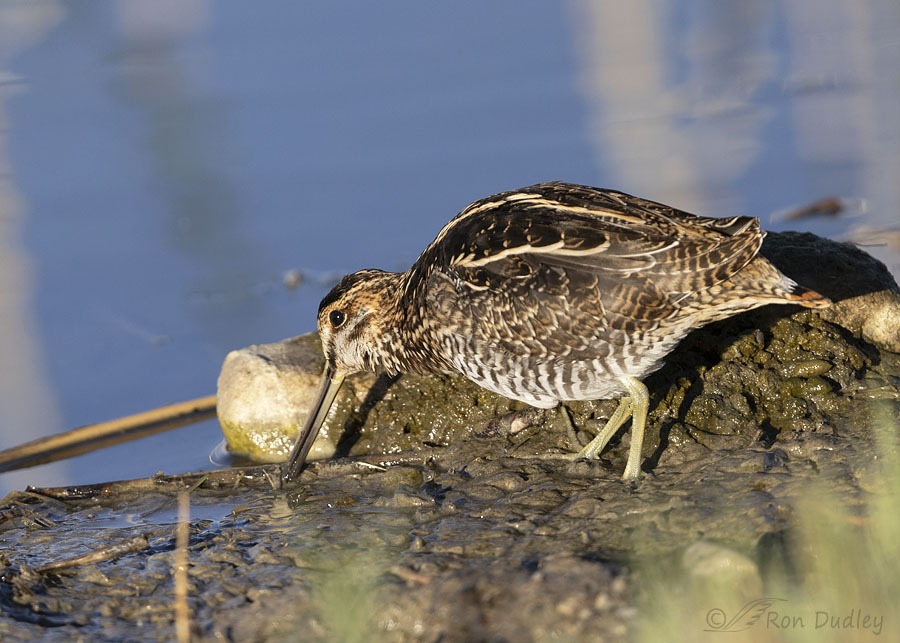
The only time I caught one of them feeding with its long, probing bill.
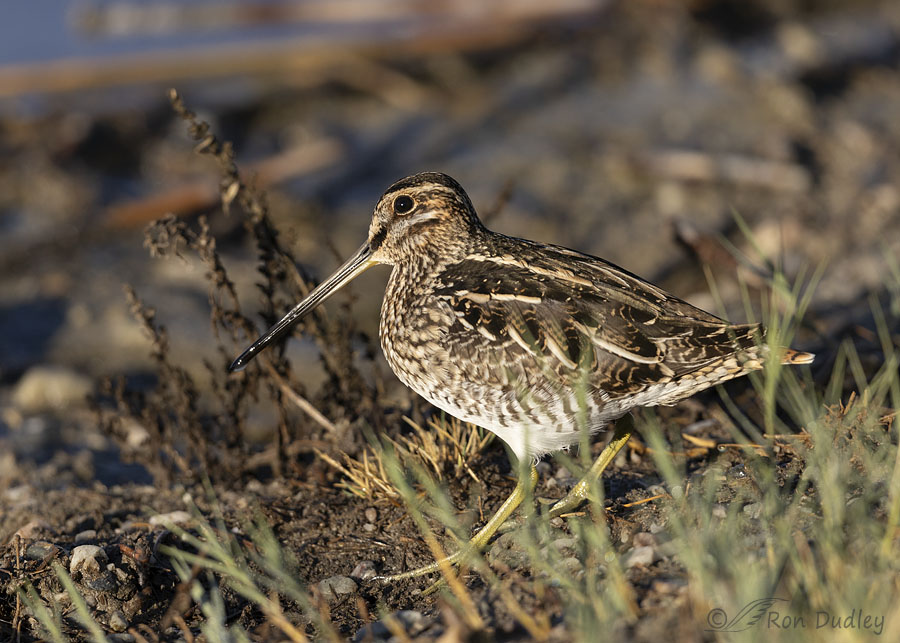
Almost immediately after I took this photo I heard at least one nearby snipe take off. When that happens, others often join them in flight. I hoped to get takeoff or flight shots of this bird so at this point I fired off a burst of photos and hoped to get lucky.
A flight shot of a snipe is something I’ve only dreamed of.
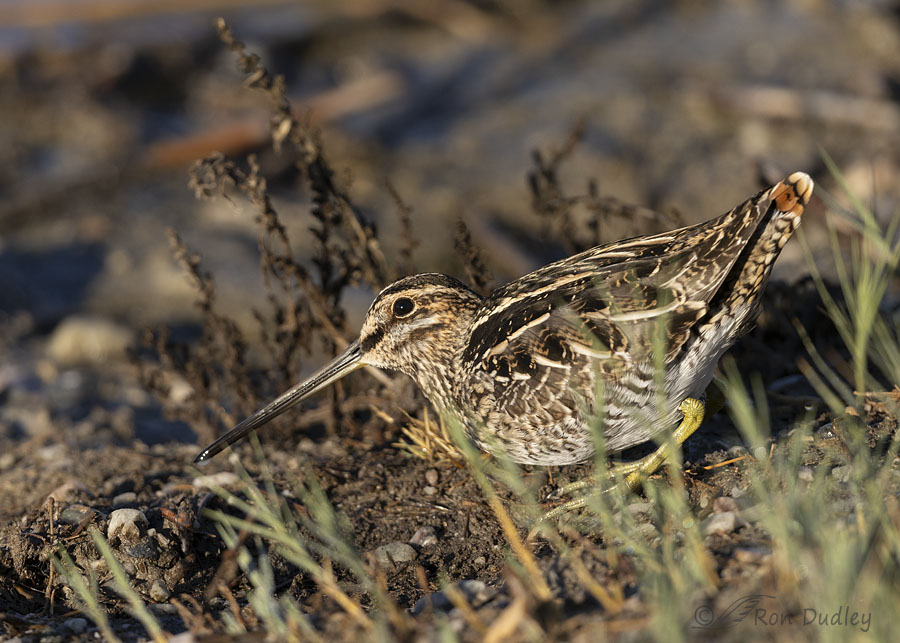
This is the last shot I got before I took my finger off of the shutter button and ended the burst. As you can see, the snipe has crouched just prior to pushing off and taking flight. If my burst had lasted another microsecond I’d likely have my takeoff or flight shot.
I missed getting it by another gnat’s whisker.
Ron
Note:
“Gnat’s whisker” is a Montana-ism I grew up with. It’s a term my dad would use to indicate a small distance or any small amount, usually while he was working on farm machinery or, in later years, in his wood shop.
I found this definition of gnat’s whisker online. It’s probably meant tongue in cheek but that’s perfect because the term is used that way too. “A gnat’s whisker is a measure of distance used by engineers, being rather less than you can see with the naked eye and definitely less than a smidgeon.”


These are wonderful! I love the one in the blue water.I need to revisit the images I took of the snipe, if I remember correctly there were 16 along the shore. They took flight when a fast, noisy pickup passed me but they returned to almost the same location. I had to move my car backward about 10 feet. They were hidden in the pickle weed and grass on the shore. I have some of one preening that I haven’t looked at closely. The images were a bit busy. I wonder if the serrations have anything to do with preening. I have never held a snipe in my hand but some softer feather birds have combs in their toes to preen, maybe snipe have bills for preening softer feathers.
April, I’ve seen more snipes at that location than I saw on this day. Never was able to get an accurate count though.
I am familiar with the term ‘gnat’s whisker from my youth in the 50s and 60s in South Australia, but ‘bee’s whisker’ was (and is)the more commonly used term.
Love the images of this fantastic species, but then given my Family name, that’s not surprising.
Gary, I’ve heard of a version using “bee’s” instead of “gnat’s” but it was referring to a different part of the male bee’s anatomy – one that bees don’t really have… 🙂
I see what you mean about the family name.
Fun and educational post today! Had NO idea those bills had some flex to them or Dan’s info on taste buds! Gnat’s eyelash is what I’m familiar with besides “attention span of a gnat which applies to me more often than I care to admit….. 😉 Wonder if the bristles have some sensory function?
Thanks, Judy. I don’t know.
Fascinating. My German father used the term gnat’s whisker. I wonder where he got it from?
EC, I’ve also heard the variation “gnat’s eyelash”, but less often.
My favorite kind of Snipe hunt. Nary a feather disturbed! Love this series, Ron. I was once watching a Snipe feed at the edge of a wet prairie. Then a Northern Harrier flew over, and sixteen more Snipe took to the skies! I hadn’t even noticed the others!
Diane, what you describe is very much like most of my experiences with snipes. Now, if I see one, I look really, really hard for others nearby.
Great series. The small grooves at the base of the maxilla are interesting and I wasn’t aware of them before. I did some searching but, like you, I could find no reference to them. I love the photo that clearly demonstrates rhynchokinesis, especially when contrasted to the photo of probing into the mud. There are touch receptors at the tip allowing the bird to know it has made contact with something in the mud. Opening just the tip allows contact with the taste buds in the roof of the mouth (no taste buds in a bird’s tongue) at the tip just behind the touch receptors. If taste says food, open the bill just enough more to grasp the prey and pull it out. All done at the tip without the need to fully open the beak. This photo and the ones on your link, show this really well and help people see that not all beaks are completely rigid.
“no taste buds in a bird’s tongue”
Now that’s an interesting little tidbit, Dan. I just assumed, wrongly.
Taste is important to birds but they have far, far fewer taste buds than we do. For most birds the taste buds are in the roof of the mouth near the tip. Some birds also have a cluster of taste buds at the back of the oral cavity. Saliva is also important to allow contact with taste buds embedded in our tongue. Birds don’t produce copious amounts of saliva and the few salivary glands are also next to these taste buds. Even seed-eaters momentarily push food up against the roof of the mouth near the tip, allowing contact with salivary glands and associated taste buds. Birds are endlessly fascinating.
“the taste buds are in the roof of the mouth near the tip”
The roof of the mouth or the roof of the bill? I just want to be clear on this because I want to remember it right.
I probably should have been more explicit. I was using “mouth” loosley to refer to the space within the bill from its tip to the throat. The taste buds are located just inside the tip of the maxilla.
I’m in too much of a hurry. Strictly speaking the maxilla is the bone and the bill itself extends beyond that. It is in the underside of the upper bill where the taste buds are found
Thanks for the clarification, Dan.
Wow! I love the close up of the face and mandible. It is like looking through a microscope.
Take Care,
Kaye
“It is like looking through a microscope.”
It sorta is, isn’t it Kaye. For me that’s part of the appeal with that type of photo.
Such beautiful plumage, the tiny grooves on the bill, the itty-bitty red-tail-hawk tail tipped up in the last photo, and “gnat’s whisker” – such a wonderful post!
Carolyn, thanks for pointing out that red-tipped tail. I should have.
I hate when that happens!! Sorry about the missed flight shot but the others are real nice and it’s a treat to see this bird up close!
“I hate when that happens”
So do I, Joanne. It also happened to me another time that morning with a different bird. I guess it just wasn’t my day to get lucky.
Fantastic shots Ron. And that camera! The clarity of the crop showing the beak detail blew me away.
Gnat’s whisker. Even though I am from California, I have heard the term before. Also have heard the term “the attention span of a gnat”, usually used to describe adult interactions with small children (and select adults).
“And that camera!”
Thanks, Michael. The clarity you mention has at least as much to do with my lens as it does with my camera. Probably more.
In my experience, gnats have too much of an attention span, especially when they’re trying to bite me.
Love the Gnat’s whisker. I’ve noticed lately that in addition to the outstanding photos and educational content you have added a few laugh lines. Very well done. The Rodney Dangerfield of bird photographers.
“The Rodney Dangerfield of bird photographers.”
I don’t get no respect! 🙂